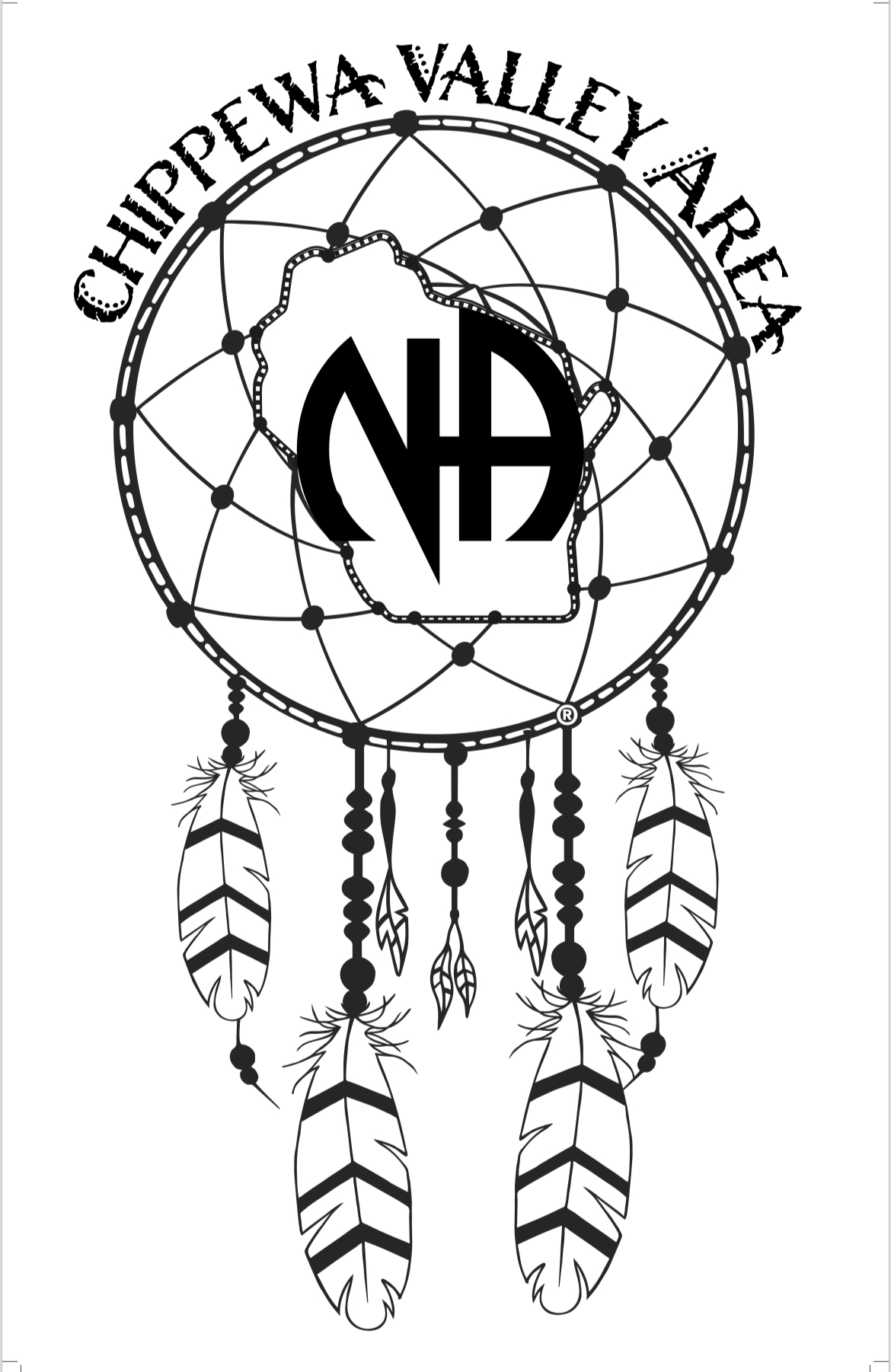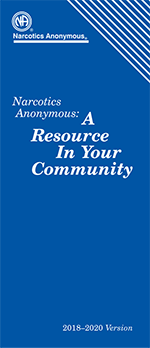Information For Professionals
A Resource In Your Community
Narcotics Anonymous is a nonprofit, international, community-based organization for recovering addicts, which is active in over 139 countries. Narcotics Anonymous (NA) members learn from one another how to live drug-free and recover from the effects of addiction in their lives.
If you have considered recommending Narcotics Anonymous to someone who has a drug problem, you may have a few questions about our organization. This pamphlet is designed to answer those questions.
Who are members of NA?
Anyone who wants to stop using drugs may become a member of Narcotics Anonymous. Membership is not limited to addicts using any particular drug. Those who feel they may have a problem with drugs, legal or illegal, including alcohol, are welcome in NA. Recovery in NA focuses on the problem of addiction, not on any particular drug.
Anonymity
The basic premise of anonymity allows addicts to attend meetings without fear of legal or social repercussions. This is an important consideration for an addict thinking about going to a meeting for the first time. Anonymity also supports an atmosphere of equality in meetings. It helps insure that no individual’s personality or circumstance will be considered more important than the message of recovery shared in NA.
NA Meetings
NA’s primary approach to recovery is its belief in the therapeutic value of one addict helping another. Members take part in NA meetings by talking about their experiences and recovery from drug addiction. NA meetings are informally structured, held in space rented by the group, and are led by members who take turns opening and closing the meeting. NA meetings and other services are funded entirely by member contributions and the sale of recovery literature.
Financial contributions from non-members are not accepted. Most NA meetings are held regularly at the same time and place each week, usually in a public facility. There are two basic types of meetings those that are open to the general public and those closed to the public (for addicts only). Meetings vary widely in format. Some formats are: participation, speaker, question and answer, topic discussion, and some have a combination of these formats. The function of any meeting is always the same: to provide a suitable and reliable environment for personal recovery.
How does NA work?
Addicts helping each other recover are the foundation of NA. Members meet regularly to talk about their experiences in recovery. More experienced members (known as sponsors) work individually with newer members.
The core of the NA program is the Twelve Steps. These “steps” are a set of guidelines outlining a practical approach to recovery. By following these guidelines and working closely with other members, addicts learn to stop using drugs and face the challenges of daily living.
Narcotics Anonymous is not a religious organization and does not mandate any particular belief system. It does teach basic spiritual principles such as honesty, open-mindedness, faith, willingness, and humility that may be applied in everyday life. The specific practical application of spiritual principles is determined by each individual. Recovery in NA is not a miracle cure that happens within a given period of time. It is a process, ongoing and personal. Members make an individual decision to join and recover at their own pace.
Rate of growth
Since no attendance records are kept, it is difficult to estimate what percentages of those who come to Narcotics Anonymous ultimately achieve long-term abstinence. The only sure indicator of our success is the rapid growth in the number of Narcotics Anonymous groups over the last several years and the rapid spread of Narcotics Anonymous outside North America.
In 1978, we had fewer than 200 registered groups in three countries; in 1982, eleven countries had 1,200 groups; in 1993, 60 countries had over 13,000 groups holding
over 19,000 meetings; in 2002, 108 countries had over 20,000 groups holding over 30,000 meetings; in April 2008, 130 countries had over 50,000 weekly meetings; as of April 2016, it is estimated that there are nearly 67,000 weekly meetings in 139 countries.
NA survey results
The following demographic information was gathered from a survey completed by almost 23,000 NA members. The survey was made available at the 2015 World Convention of NA in Rio de Janeiro, Brazil, in our international journal, The NA Way Magazine, and on our website:
Age
1% of the respondents were under 20
11% were between 21 and 30 years old
21% were between 31 and 40 years old
24% were between 41 and 50 years
29% were between 51 and 60 years
14% were over 60 years old
Men Women
59% of the respondents were male
41% of the respondents were female
In 2013 NAWS Membership Survey, our gender breakdown was 43% female and 57% male.
How survey respondents found Narcotics Anonymous
(Respondents could check more than one answer; only the top six choices are listed)
6% introduced through treatment/
counseling centers
43% introduced through another NA member
31% introduced through a family member
14% introduced through NA service effort
13% introduced through NA literature
Ethnic Diversity
The ethnic diversity of our membership seems to be representative of the geographic location. However 2015 survey was made available at WCNA in Brazil, in our international journal, The NA Way Magazine, and on our website. When this survey was conducted, 74% of respondents were Caucasian,
11% were African-American,
6% were Hispanic,
4% identified as multiracial,
3% were Asian, and 2% were other. In
2013 in Philadelphia, Pennsylvania,
76% of respondents were Caucasian,
13% were African-American,
5% were Hispanic,
3% multiracial and
3% were other.
NA in the community
Volunteer committees of NA members are formed to coordinate many services within the community. NA accepts no financial contributions from non-members, has no professional counselors and maintains no clinics or residential facilities. Below is a list of services that NA may offer.
Community Awareness Meetings may be conducted by NA members to inform the community of the existence of Narcotics Anonymous and its available services.
Health Fairs and Conferences are events conducted by professional organizations at which NA may have a display booth and/or presents information at a workshop.
Presentations are often provided to churches, parole officers, judges, counselors, nurses, doctors, and schools, among others, for information purposes.
Public Service Announcements can provide information about NA distributed to
the public via the media (press, radio, television, billboards, bus signs, and posters).
Phoneline Services may provide local meeting information and general information about NA.
Meeting Lists, which are locally produced schedules that contain times of and locations for meetings in the community are generally available.
Services to Hospitals & Institutions are provided by local committees through meetings/presentations to introduce those people attending to some of the basics of the Narcotics Anonymous program. They carry the NA message of recovery to addicts who do not have full access to regular NA meetings. Meetings or presentations are provided to hospitals, jails, addiction treatment facilities, detox centers, and other institutions.
Literature Services include a variety of books, booklets, pamphlets, audio, large-print, and ePub editions. Narcotics Anonymous literature is published in English and several other languages.

